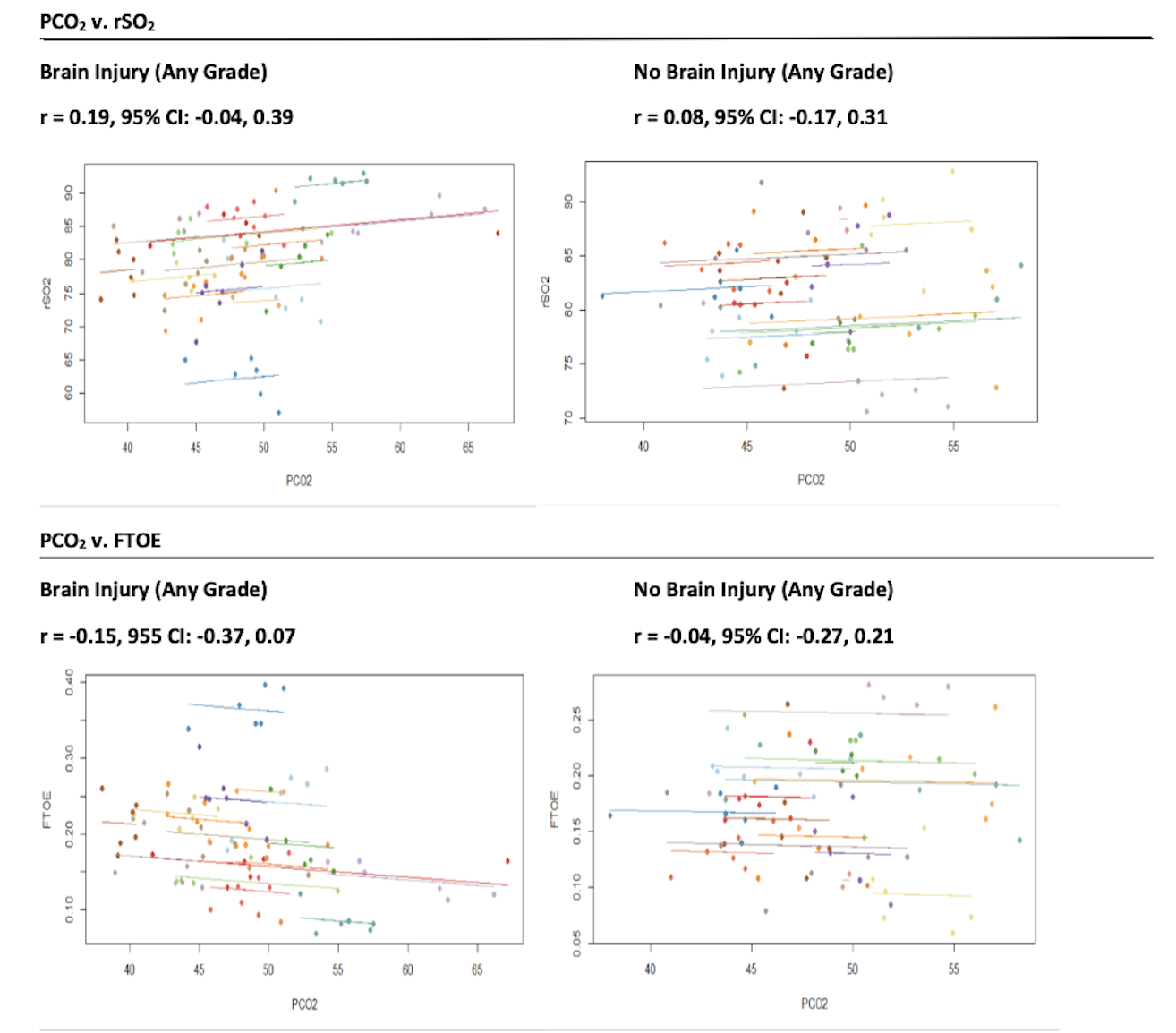Neonatal Neurology: Clinical Research
Neonatal Neurology 2: Clinical 2
168 - Impact of carbon dioxide on cerebral oxygenation in infants with neonatal encephalopathy
Publication Number: 168.136

Katie Hannon, BS (she/her/hers)
Research Assistant
Brigham and Women's Hospital
Boston, Massachusetts, United States
Presenting Author(s)
Background:
CO2 is one of the most potent regulators of cerebral blood flow (CBF). Near infrared spectroscopy has been used in neonatal encephalopathy (NE) during therapeutic hypothermia (TH) to monitor regional cerebral oxygen saturation (rSO2) that can be a proxy for CBF. Impaired cerebral autoregulation following hypoxic-ischemic brain injury has been associated with poor outcome.
Objective:
To evaluate the correlation between transcutaneous CO2 (tcPCO2) and markers of cerebral oxygenation (rSO2 and fractional tissue oxygen extraction, FTOE) among infants with NE.
Design/Methods:
This prospective observational single center trial enrolled infants, who received TH for mild to severe NE between 2019 and 2022. We identified 2 groups of patients with or without any brain injury based on the assessment of MRI after rewarming. tcPCO2, rSO2 and bedside physiological data were captured simultaneously by a real-time integrated neuromonitoring system. FTOE was calculated as (SpO2 – rSO2)/SpO2. The median of tcPCO2, rSO2 and FTOE at each hour was calculated for each infant. Using these values, we calculated the median of each variable in each of seven phases of TH for each infant. Pearson correlation coefficients between median levels of tcPCO2 and rSO2 and FTOE were computed within each phase (Figure 1). Correlation between tcPCO2 and oxygenation across the study period by brain injury status was calculated using repeated measures correlation to take into account intra-individual correlation among medians of the different phases (Figure 2).
Results:
Data of 31 infants were analyzed. Integrated monitoring began at median 24 hours of life (HOL, min-max: 11-51) and ended at median 94 HOL (min-max: 87-120). Sixteen (52 %) infants presented with any brain injury on MRI. Correlations between tcPCO2 and measures of oxygenation were small throughout the phases of TH, with positive correlations with rSO2 and negative with FTOE (Figure 1). Though small in effect size, correlations were stronger among infants with brain injury (tcPCO2/rSO2 r= 0.19; tcPCO2/FTOE r= -0.15, compared to those without brain injury (tcPCO2/rSO2 r= 0.08; tcPCO2/FTOE r=-0.04) (Figure 2).
Conclusion(s):
Correlations detected between CO2 and cerebral oxygenation were modest with a positive correlation with rSO2 and negative correlation with FTOE across the study period. Though small in effect size, the correlation between tcPCO2 and oxygenation over the study period was greater in magnitude among infants with brain injury compared to those without, among whom the correlation was close to zero.
.png)

